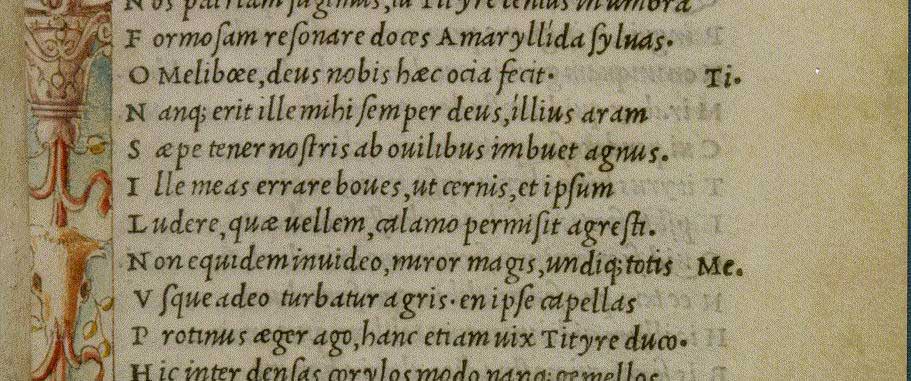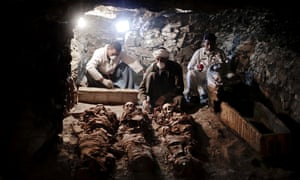via Boing Boing by Andrea James

Paul McNeil just published his comprehensive typographical overview, The Visual History of Type. To celebrate, he also published a list of his six favorite faces for It's Nice That, starting with the first compact italic.
Continue reading
==============================
via Big Think by Frank Jacobs

Pyramids don’t occur naturally (1). But this strange pyramid maps a lot of things that do. They’re called biomes, and they are arranged pyramidally to show where, why and how they occur.
Continue reading
==============================
via OUP blog by Guenter Lewy

“Berlin Holocaust Memorial” by Jolanda Verhoef. CC BY-SA 2.0 via Flickr
The hideous deeds committed by members of ISIS raise the question why humans alone, among the species, at times engage in mass killings of their own kind. We can find help in understanding this vexing issue by looking at the men who organized and carried out the Nazis’ attempted destruction of the Jewish people known as the Holocaust. Mass shootings like those in Paris or Orlando, inspired by radical Islamist ideas, take place in violation of legal and societal norms, whereas the massacres of the Holocaust were organized, directed, and legitimated by the state. Nevertheless, both kinds of deeds involve the taking of innocent lives on a large scale, which is something that challenges our most basic notions of human morality. We are inclined to believe that such monstrous deeds can only be carried out by monsters.
Continue reading
==============================
via Interesting Literature
A reading of a classic Shakespeare sonnet
‘No longer mourn for me when I am dead’ is one of the most widely anthologised sonnets by Shakespeare. In Sonnet 71, the Bard enjoins his beloved, the Fair Youth, not to grieve for him when he dies. Not so much a ‘remember me’ as a ‘forget me’ sentiment. But how sincere is such a wish? This sonnet is actually more layered and complex than it might first appear, so some closer analysis is necessary.
Continue reading
This reminds me of a friend who, lacking in self-esteem, says things such as “don’t bother about me”. If I really don’t bother then I don’t care about her!!
==============================
via The Guardian by Philip Hoare

The species has been seen to congregate, communicate and even evict one another. Photograph: Alamy Stock Photo
If animals are our other, there is nothing quite so other as the octopus. It is the alien with whom we share our planet, a coeval evolutionary life form whose slithery slipperiness and more than the requisite number of limbs (each of which contains its own “brain”) symbolise the dark mystery and fear of the deep.
Now comes news that octopuses have been building their own cities down there. In a story straight out of James Cameron’s The Abyss, scientists have discovered that the wonderfully named “gloomy octopus”, octopus tetricus, are not the loners we once thought them to be.
Continue reading
==============================
via Flavorwire by Alison Nastasi
Photographer and artistic director Francis Meslet, who we discovered on Fubiz, roams Europe capturing photos of abandoned sites and sanctuaries. Meslet’s series of churches, chapels, and other religious spaces caught our attention for the stunning combination of stained glass, rotting wood, and historical elements. Also, there’s just something really spooky about a crumbling church. ’Tis the season.
Continue reading
Sorry, can’t copy images but you can see them via the link above
==============================
via Boing Boing by Mark Frauenfelder
Nigel Stanford enlisted the talents of a number of Kuka industrial robots to perform "Automatica".
Two videos to watch
==============================
via Big Think blog by Philip Perry

Getty Images.
It’s drilled into us since elementary school... the Big Bang created everything. Or did it? There’s actually one celestial body, the Methuselah star (HD 140283) which has astronomers stumped. It’s thought to be 14.5 billion years old. But the Big Bang occurred 13.8 billion years ago.
Continue reading
==============================
via OUP Blog by Christopher Willoughby

Types of Mankind by Internet Archive Book Images. Public Domain via Wikimedia Commons
In 1999, the human genome project declared race a biological fiction with no basis in the genetic code. Despite this position, many physicians and medical scientists continue to use race in genetic studies, drug tests, and general practice. Since racial medicine persists, the question emerges: what’s the historical relationship between the medical profession and race? When did the medical profession begin to define racial difference, and can understanding this history lead to a more “race” conscious and sensitive medical profession?
Continue reading
==============================
via The Observer by Edmund Bower

The principal occupant of the tomb was a goldsmith named Amenemhat from the 18th Dynasty (1550BC to 1292BC). Photograph: Nariman El-Mofty/AP
A remarkable ancient Egyptian tomb has been discovered in the necropolis of Draa el-Naga, near Egypt’s famous Valley of the Kings.
The tomb consists of a small room at ground level and a burial chamber eight metres below containing four mummies. Its principal occupant was a goldsmith named Amenemhat from the 18th Dynasty (1550BC to 1292BC), the time of Tutankhamun, Nefertiti and Hatshepsut. The tomb also contains skeletons, funerary artefacts, including 150 ushabti statues, intended to be servants in the afterlife, and four wooden sarcophagi, jewellery and funerary cones.
According to Zahi Hawass, one of the world’s leading Egyptologists and Egypt’s former minister of antiquities, the discovery of a tomb containing an identifiable nobleman such as this could be of great significance.
Continue reading
No comments:
Post a Comment